(167 products available)



























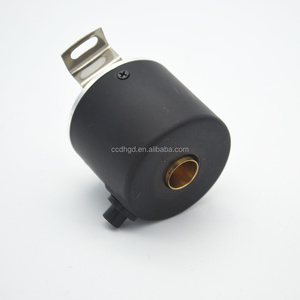




















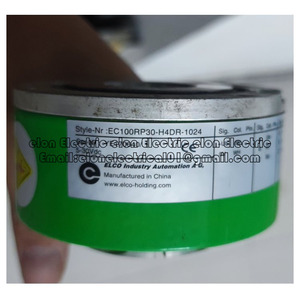










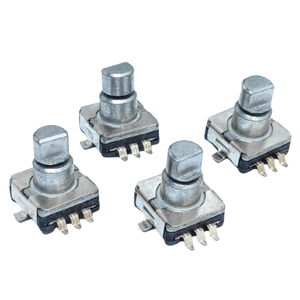




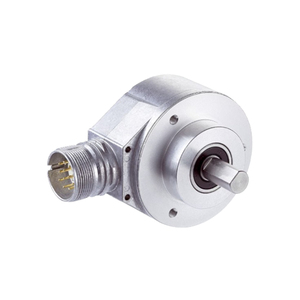


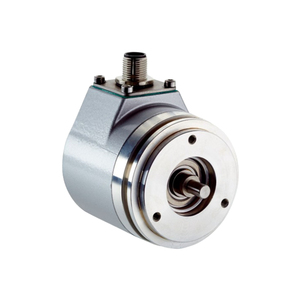

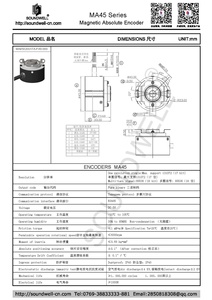








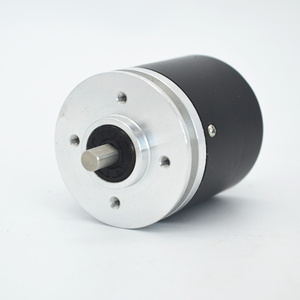



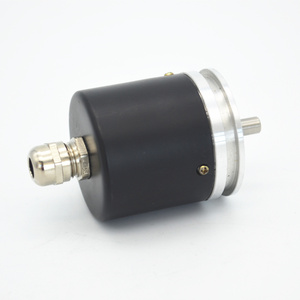


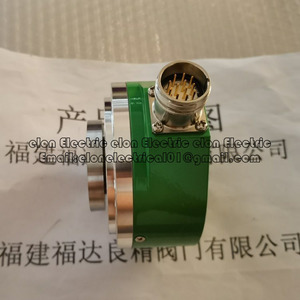








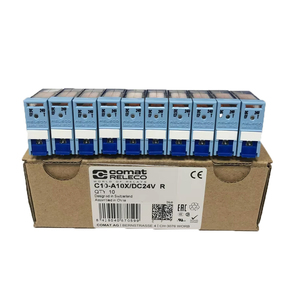
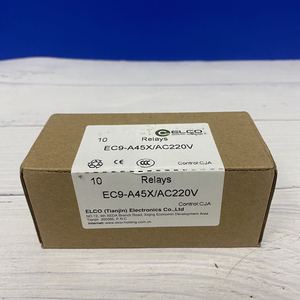


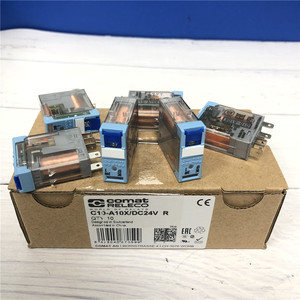


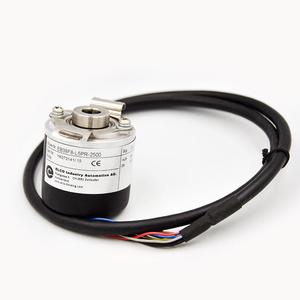



























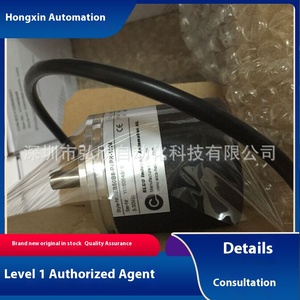
When it comes to electronics and mechanical devices, encoders play a key role in translating motion. These motion translations give vital data input/transmission for applications in numerous sectors. Therefore, businesses should understand the various types and functions of these encoders.
There are two broad categories of encoders based on output signals. These are absolute and incremental encoders.
Function
Absolute encoders provide position information. This position data remains even after a system power loss. This is because these encoders utilize a unique code on their output disc for position indication. This feature allows precise knowledge of an object's position via a single turn or several turns. Even if the system resets or power is lost, the encoder's position memory will still provide this critical data.
Applications
Some applications where absolute encoders come in handy include robotic arms, CNC machines, and aerospace applications. In these applications, absolute position feedback is required for repeatability and accuracy. Other areas where businesses may commonly find absolute encoders are in high-end positioning systems.
Function
On the other hand, incremental encoders provide position data by generating pulses with each movement. These movements are through rotational actions. Users then need to combine these pulses to yield position feedback. Note that if there is a system power loss, the encoder will reset the information. Therefore, while incremental encoders are less complex and usually more affordable, they require constant power to maintain accuracy.
Applications
Incremental encoders are frequently used in systems where relative position is adequate. For example, they are applied in motor control systems, conveyor belts, and robotic automation systems. These encoders are often applied when an economical and lightweight solution is required, especially in basic speed and position feedback scenarios.
The electronic encoder's operational efficiency and longevity greatly depend on the materials and durability a user chooses. Here is a breakdown of key components that a buyer should pay attention to when purchasing these encoders.
Sensing Element
Typically, an encoder's sensing element is a primary contributor to its operational accuracy. For instance, optical encoders employ glass or plastic discs with code patterns etched or manufactured on them. The pattern is then read by a light source and detected by a photodiode to provide position information. The clearer the pattern, the finer the resolution.
In contrast, magnetic encoders use magnets placed on the disc to generate an indexable magnetic field. Hall effect sensors in the encoder are then used to detect the field changes. Note that usually, the materials used in optical encoders are more precise than those in magnetic encoders. However, the former is more fragile and prone to dust.
Housing Materials
Selecting an appropriate housing material is critical for an encoder's long-term durability. Common materials used in housing this equipment include aluminum, stainless steel, or high-strength plastic.
Steel materials offer superior resistance to wear and extreme temperatures. On the other hand, plastics are often more lightweight and cost-effective. However, they generally provide lesser protection against high-impact scenarios. Therefore, selecting an electrical encoder's housing material will depend on the intended use environment.
Seal and Protection Standards
In environments with high levels of moisture, dust, or extreme temperatures, choosing an encoder with adequate sealing is vital. This is often represented by the International Protection Marking (IP) ratings.
For example, an encoder with an IP67 rating can withstand dust penetration and water immersion up to 1 meter for 30 minutes. Such encoders are often suitable for outdoor applications.
Temperature Resistance
Industrial applications frequently expose products to severe heat or cold. That is why it is vital to select an encoder that can withstand these temperature fluctuation extremes. Materials like stainless steel and certain high-grade plastics offer exceptional thermal resistance properties.
Vibration Resistance
Applications like heavy machinery and automotive sectors frequently come with high levels of vibration. Continuous vibration can affect the precision of an encoder and, in the long run, damage it. Luckily, vibration resistance-rated encoders exist. These encoders usually have enhanced mounting structures and more robust internal components to maintain a stable operation in high-vibration environments.
Wear Resistance
Frequent mechanical movements wear down the encoder components over time. This is particularly true for devices like motors and servos that are in constant operation. Luckily, manufacturers have come up with wear-resistant materials to counteract this issue. These include hardened metals or specially treated housings that reduce wear.
Electronic components have various uses across diverse consumer industries. A complete understanding of their commercial value and versatility enables buyers to harness their full potential, ensuring the maximum return on investment.
Industrial Automation
In this space, encoders are used in robotic systems, conveyor belts, and automated machinery. Here, the encoders provide precise position feedback, facilitating increased productivity and efficiency. The result of this is generally reduced operational cost and improved output performance.
Consumer Electronics
For instance, the most common application of encoders in this space is within imaging devices. These devices include digital cameras and video equipment. In these devices, the encoders enable precise zoom and focus control. This, in turn, enhances the user's experience and device functionality.
Automotive
Car manufacturers frequently install encoders into electric power steering systems, ABS, and transmission. These encoders' role is to ensure position and speed detection for improved safety and performance. This results in greater accuracy in automotive systems, improving vehicle performance into the bargain.
Aerospace
Aerospace companies also heavily depend on encoders to maintain the systems' position and speed. Generally, encoders in this space must endure extreme conditions. Hence, they require superior material quality and sealing properties.
The commercial value of these products lies primarily in their operational efficiency improvements. It also comes in the form of reduced maintenance costs across various industries. By providing precise motion control, an electrolytic capacitor ensures systems operate optimally while minimizing resource use.
Cost Savings
Although purchasing encoders entails some initial costs, they save the customer a lot over time. They reduce breakdown frequency, prolong equipment lifespan, and increase operational efficiency. Most encoders also come with easy instructions on how to install a capacitor. This makes them user-friendly and eliminating the need for specialist labor. All of these translate into significant cost savings in the long run.
Revenue Generation Potential
To begin with, businesses that invest in encoders generally improve their productivity. This productivity improvement leads to increased output and services within a given time. This directly increases income to any businesses that use these encoders. Furthermore, with the versatility of uses of these encoders across many industries, the demand for them is also high. This consistently creates market opportunities for businesses to leverage.
The Electronic Encoders' operating efficiency, reliability, and accuracy rely on the type of encoder chosen. The buyer, therefore, needs to consider various parameters to select the ideal one for a given application. Below are the key factors to focus on.
Temperature Range
Bearing in mind the operating temperature range is critical, especially for outdoor and industrial applications, which commonly experience extreme heat or cold. In extreme temperature fluctuation environments, selecting an encoder that can withstand these conditions is vital. These encoders often have enhanced internal mechanisms and housing designs. These designs improve thermal resistance and, consequently, operational security.
Vibration and Shock
High levels of vibration or mechanical shock can greatly impact the accuracy of any encoder. This is particularly true for encoders in automotive, robotics, or heavy-duty machinery applications. Fortunately, some encoders have vibration resistance features. They frequently include enhanced internal stabilizing components. These components absorb or counteract the impact of the vibrations on the encoder.
System Integration
The selected encoder must integrate easily with existing systems. This is particularly critical for customers working in automating their operations to enhance productivity. To achieve this, ensure the encoder's output type matches the current system's requirements. One can use an example here. For instance, a serial port adaptor will likely be compatible with various systems if it offers both incremental and absolute outputs.
Signal Type
Customers should ensure they select encoders with signal types compatible with their control systems. Most encoders use either analog or digital output signals. While all these signals work similarly, the systems to which they work will influence their compatibility.
How accurate and detailed the position feedback information the encoder generates is vital in determining its functionality. For example, optical encoders are more precise than other encoders. The precision would be better still if the optical encoder used high-quality materials for the sensing elements.
Application Requirements
Ideally, the resolution and precision customers require will depend on their application needs. Simple positioning applications do not require high-resolution encoders. In contrast, high-end CNC machines, robotics, and aerospace applications require more precise arc and linear movement.
Resolution Measurement
Encoder resolution measures in pulses per revolution (PPR) or counts per revolution (CPR). The higher the PPR or CPR, the more precise the output feedback will be. Moreover, some encoders also come with multi-turn capabilities. This feature enables them to monitor positional data over successive rotations. It is only necessary to note that, while generally more accurate, these encoders may also be more costly. They may also require additional complexity in installation or maintenance.
A1. LVDTs are used to measure linear displacement, which is typically mechanical. The LVDT works by providing a voltage output proportional to the movement of the internal core. This core is made of ferromagnetic material and is what interfaces with the equipment or material being measured.
A2. In consumer electronics, for instance, digital cameras and video equipment, encoders are essential for zoom and focus control. Their role here is to convert these mechanical motions into electronic signals. This conversion allows precise control and feedback in these devices.
A3. One cannot conclusively say that absolute encoders are better than incremental encoders or vice versa. Each type has its own merits and demerits. For example, absolute encoders are expensive and intricate, whereas incremental encoders are simpler and lower-priced.
A4. Buyers should consider a few factors when purchasing an encoder varistor. These factors include the operational environment, application requirements, and system compatibility. These factors directly influence the long-term benefits and performance of the encoders.
A5. LVDTs are employed in these systems to monitor the displacement of critical components such as control surfaces and landing gear. In addition, LVDTs are durable and highly accurate. This makes them useful for maintaining operational safety and system integrity in extreme conditions.